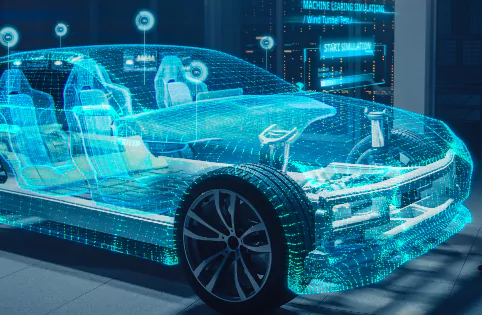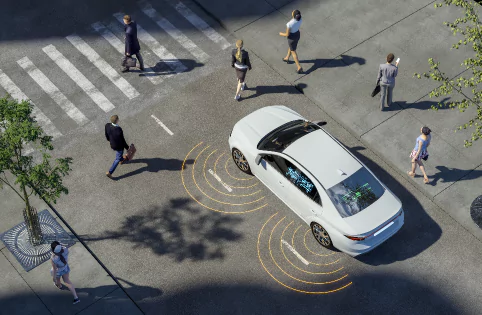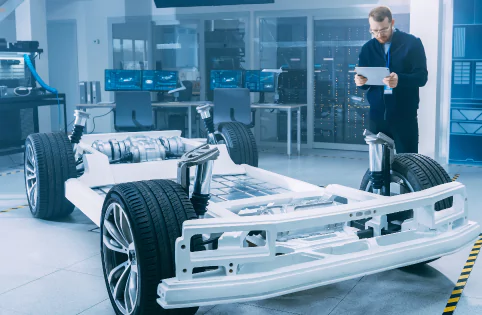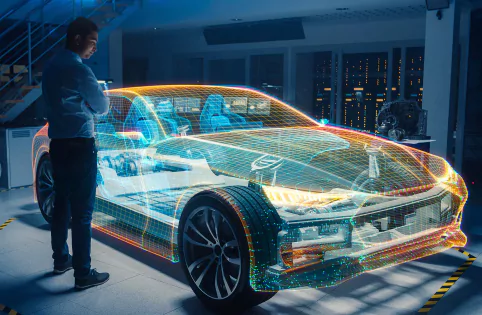What Is AUTOSAR?

AUTOSAR is the result of collaboration to develop standardized systems for easier integration of software components.
AUTOSAR (Automotive Open System Architecture) is an open and standardized software architecture framework developed for the automotive industry. It provides a common, platform-independent methodology and specifications that enable the development, integration, and management of automotive software components from various suppliers. AUTOSAR was established as a collaborative effort by leading automotive manufacturers, suppliers, and tool vendors to address the growing complexity of software in modern vehicles.
The primary goal of AUTOSAR is to facilitate the development of automotive systems that are modular, scalable, and interoperable. By defining standardized interfaces, communication protocols, and data formats, AUTOSAR ensures that software components from different suppliers can seamlessly integrate with each other. This promotes reusability, reduces development time, and allows easier updating and upgrading throughout a vehicle’s lifecycle.
AUTOSAR is built on a layered architecture that consists of the application layer, runtime environment (RTE), basic software layer, and the ECU abstraction layer. The application layer represents the software application that controls specific vehicle functions, while the RTE acts as a mediator between the application layer and the underlying basic software layer, facilitating communication and interaction between software components. The basic software layer provides essential services and functions required by the application layer, such as communication, diagnostics, memory management, and operating system services. The ECU abstraction layer abstracts the underlying hardware, allowing the seamless integration of software components across different electronic control units (ECUs) within a vehicle.
One of the key advantages of AUTOSAR is its focus on standardization, which promotes interoperability and collaboration among automotive stakeholders. AUTOSAR-compliant software components can be developed, validated, and supplied by different companies, fostering a more efficient and competitive automotive supply chain. Additionally, AUTOSAR emphasizes safety and security through standardized mechanisms for error handling, diagnostics, and communication, ensuring the robustness and reliability of automotive software systems.
AUTOSAR is evolving to address new challenges and emerging technologies in the automotive industry. Its adoption is becoming increasingly widespread, as it enables automotive manufacturers to streamline their software development processes, reduce costs, and build sophisticated and interconnected vehicles.
What Is AUTOSAR Adaptive?

AUTOSAR Adaptive provides increased support for emerging and future-proof technologies in next-generation vehicles.
AUTOSAR Adaptive is an extension of the classic AUTOSAR standard that caters to the requirements of highly complex and dynamically changing automotive systems. As vehicles become increasingly connected and autonomous, a more flexible and scalable software platform becomes critical. AUTOSAR Adaptive addresses this with new features, components, and architectural concepts to accommodate the evolving demands of advanced automotive systems.
AUTOSAR Adaptive focuses on the challenges posed by the growing connectivity, computational power, and software complexity of modern vehicles. It embraces the service-oriented architecture (SOA) approach, in which software components are designed as services that communicate through standardized interfaces. This promotes greater flexibility, modularity, and scalability, enabling easier integration and maintenance of software components from various suppliers.
Another significant aspect of AUTOSAR Adaptive is its reliance on Ethernet as the primary communication backbone. Ethernet provides higher bandwidth, lower latency, and improved real-time capabilities compared to traditional communication protocols. This makes it suitable for the data-intensive and time-critical requirements of advanced automotive systems. AUTOSAR Adaptive leverages Ethernet to enable efficient and reliable communication between software components.
By adopting AUTOSAR Adaptive, automotive manufacturers can develop software systems that are future-proof and capable of accommodating emerging technologies. It enables the integration of advanced systems such as connected cars, autonomous vehicles, and electric cars. AUTOSAR Adaptive supports over-the-air updates, enabling secure and efficient software updates and bug fixes throughout the vehicle’s lifespan. These flexible and adaptive capabilities make AUTOSAR Adaptive a critical component in the development of next-generation vehicles.
The Difference Between AUTOSAR and AUTOSAR Adaptive

While AUTOSAR addresses distributed embedded systems, AUTOSAR Adaptive supports the increasing need for connectivity and updatability.
AUTOSAR is a standardized software architecture framework that was initially developed for distributed embedded systems in the automotive industry. It provides a platform-independent methodology for developing automotive software components and enables seamless integration and interoperability among different software modules from various suppliers.
AUTOSAR Adaptive is an extension of AUTOSAR that was specifically designed to address the requirements of highly complex and dynamically changing automotive systems. It introduces new features to meet the challenges posed by increasing connectivity, computational power, and software complexity in modern vehicles.
Here are some key areas of difference between AUTOSAR and AUTOSAR Adaptive:
- Target systems: AUTOSAR is primarily targeted at distributed embedded systems in vehicles, where software components communicate through a standardized bus system. AUTOSAR Adaptive is designed for connected, dynamic automotive systems that require advanced functionalities such as over-the-air updates, cloud integration, and advanced connectivity.
- Architecture: AUTOSAR follows a classic layered architecture with well-defined interfaces between the application, basic software, and hardware abstraction layers. AUTOSAR Adaptive adopts a service-oriented architecture (SOA), with software components designed as services that communicate through standardized interfaces.
- Communication protocol: AUTOSAR primarily relies on traditional communication protocols such as Controller Area Network (CAN) and FlexRay. AUTOSAR Adaptive emphasizes Ethernet-based communication as the primary backbone for its advanced connectivity requirements.
- Development flexibility: AUTOSAR provides a standardized development methodology that promotes reusability and interoperability among software components. AUTOSAR Adaptive further enhances this flexibility by enabling dynamic adaptability and remote software updates, making it easier to introduce new functionalities, technologies, and services into the automotive systems.
Key Features and Components of AUTOSAR Adaptive
AUTOSAR Adaptive introduces features and components that enable advanced automotive software systems development:
- Service-oriented architecture (SOA): The SOA approach promotes flexibility and modularity. Software components are designed as services that communicate through standardized interfaces, enabling easier integration, scalability, and maintenance.
- Ethernet-based communication: Ethernet provides higher bandwidth, lower latency, and improved real-time capabilities compared to traditional communication protocols, so it is suitable for the data-intensive and time-critical requirements of advanced automotive systems.
- Over-the-air (OTA) updates: Given the increasing complexity of automotive software, the ability to update software components remotely becomes hugely important. OTA updates are secure and efficient, and they enable bug fixes throughout the vehicle’s lifecycle.
Benefits and Challenges of AUTOSAR Adaptive

Because AUTOSAR Adaptive’s benefits are complex, it also introduces challenges to training and development.
The benefits of AUTOSAR Adaptive are instrumental in shaping the future of automotive software development:
- Flexibility and scalability: SOA enables flexible integration of software components and services from different suppliers. This modular approach brings easier customization and scalability of automotive systems, making it simpler to integrate new functionalities and technologies.
- Advanced connectivity and functionality: Responding to the connectivity demands of modern vehicles, AUTOSAR Adaptive facilitates seamless integration with external systems and cloud services. This enables advanced functionalities such as OTA updates, remote diagnostics, and data analytics.
- Future-proofing: AUTOSAR Adaptive is designed to accommodate emerging technologies and evolving industry requirements. Its adaptability and dynamic nature make it well suited to the development needs of next-generation vehicles.
Despite its numerous advantages, adopting AUTOSAR Adaptive also presents certain challenges:
- Learning curve: AUTOSAR Adaptive introduces new concepts and complexities, requiring automotive developers to acquire additional knowledge and expertise. Teams need training and familiarization with the platform to fully leverage its capabilities.
- Development complexity: The flexibility and modularity of AUTOSAR Adaptive come at the cost of increased complexity in the software development process. Managing inter-service communication, ensuring compatibility, and meeting stringent safety and security requirements can pose challenges.
How Can Wind River Help?

Studio offers solutions for advanced automotive systems developers.
Wind River Studio
Wind River® Studio is the first cloud-native platform for the development, deployment, operations, and servicing of mission-critical intelligent systems such as those required in the modern automotive industry. Studio provides solutions including:
- Wind River Studio Cloud Platform: Leverage an open source, production-grade distributed Kubernetes solution for managing cloud infrastructure.
- Wind River Studio Pipeline Manager: Create automated pipelines to customize your CI/CD workflows for coding, scanning, assembling, and testing your embedded software project.
- Wind River Studio Gallery: Integrate applications where, when, and how your teams need them during lifecycle management.
- Wind River Studio Conductor: Model applications and services and automate their entire lifecycle, including deployment on any cloud or data center environment.
- Workflow automation and digital feedback loop capabilities: Automate and scale developer workflows, with rapid feedback on the performance of systems and applications operating at the intelligent edge.
- Updates on the edge: Push live software updates to edge cloud nodes and edge devices.
Read more about Wind River solutions in the automotive industry in this Studio Linux Services case study.

